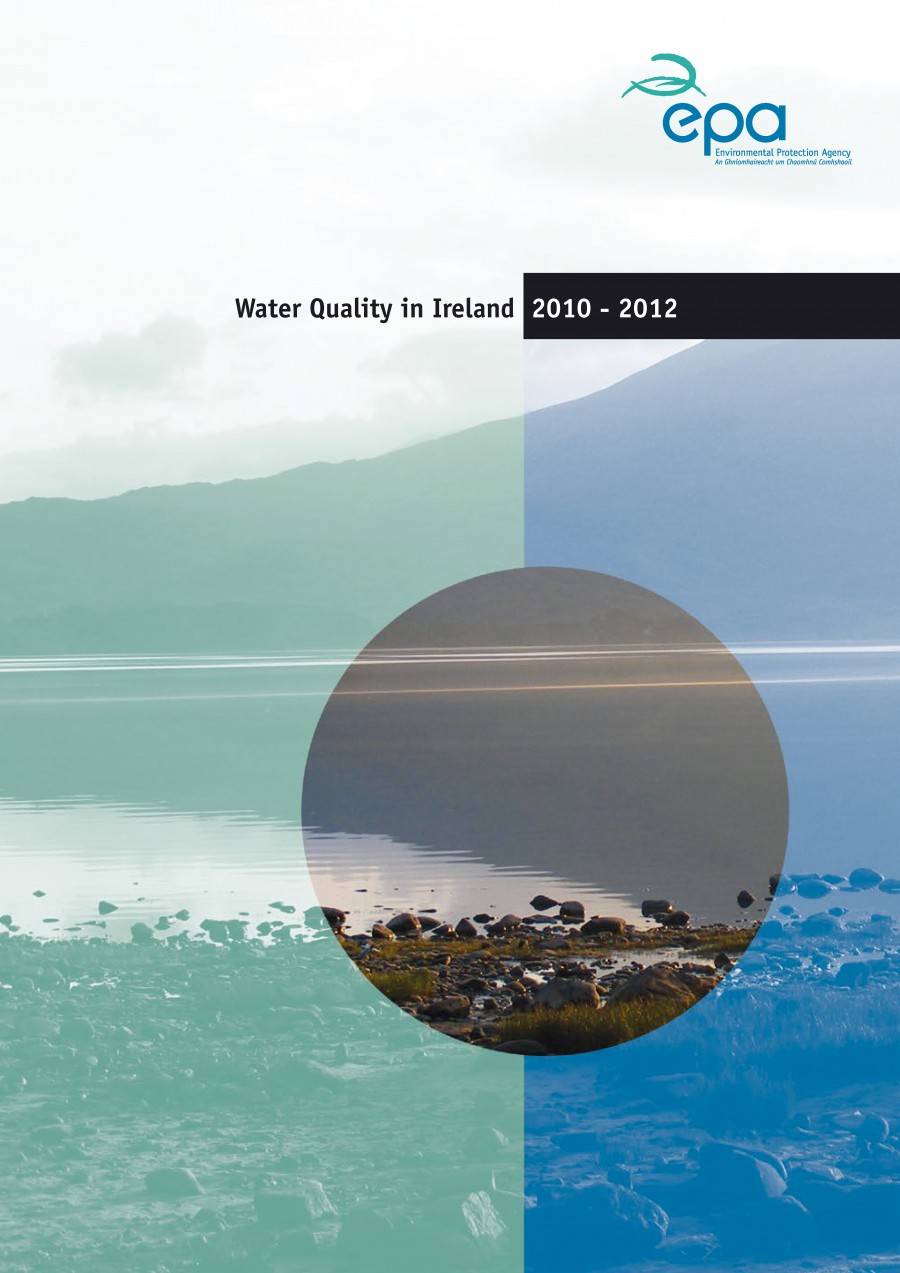Water Quality in Ireland 2010-2012

| Version | |
| Download | 57 |
| Stock | ∞ |
| Total Files | 1 |
| Size | 4.39 MB |
| Create Date | 30th August 2015 |
| Last Updated | |
This report presents a review of water quality in the State for the years 2010 to 2012. It is the most recent in the series of comprehensive three-year reviews of water quality in Ireland that have been undertaken by the Environmental Protection Agency (EPA) and its predecessor organisations. The purpose of the report is to give a detailed review of all the main issues related to the quality of the aquatic environment in Ireland, in order to provide guidance towards the protection and enhancement of this valuable resource, and the preparation of second cycle river basin management plans under the Water Framework Directive (2000/60/EC). The report is based on monitoring carried out at:
- 336 groundwater monitoring sites (covering approximately 69,000 km2)
- 3,051 river monitoring sites (covering approximately 13,300 km of river channel length)
- 42 canal monitoring sites (covering approximately 332 km of channel)
- 213 lakes (covering approximately 955 km2 of lake surface area)
- 9 heavily modified water bodies (covering approximately 37 km2)
- 193 transitional water bodies (covering approximately 844 km2), and
- 101 coastal water bodies (covering over 13,000 km2).
These water quality datasets have been generated by the EPA, local authorities, Inland Fisheries Ireland, Waterways Ireland, the Marine Institute, as well as from other State agencies, such as the Sea Fisheries Protection Authority and the Irish Coast Guard.
The initial focus of the report is on the status of waters as defined under the Water Framework Directive.
However, the report also contains more in-depth analysis of the underlying environmental indicators that determine status, including their trends. These environmental indicators are particularly important for identifying the causes of environmental impacts and for guiding the appropriate management measures for the restoration and protection of waters. The environmental indicators of the quality of Ireland’s aquatic environment reported include; ecological assessments, nutrient levels and trends, reported fish kills, the quality of shellfish waters, faecal contamination of groundwater, levels of radioactivity in marine waters, oil pollution incidents in marine waters, and the presence and levels of toxic substances in the aquatic environment.
| File | Action |
|---|---|
| Water Quality in Ireland 2010-2012.pdf | Download |
Download





